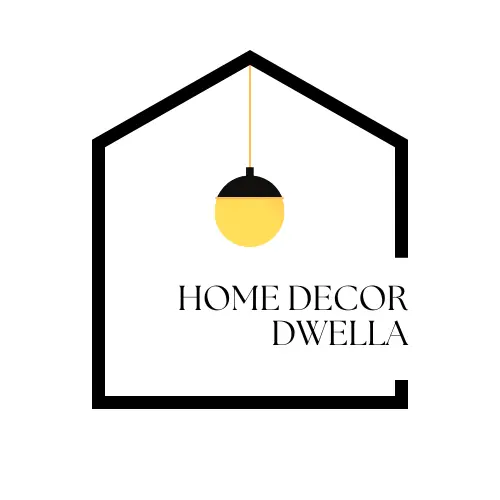7 Low-Maintenance Indoor Plants for Easy Greenery and Clean Air
Indoor plants can improve the look and feel of any room without demanding too much care. Many people want plants but worry about the time and effort needed to keep them alive.
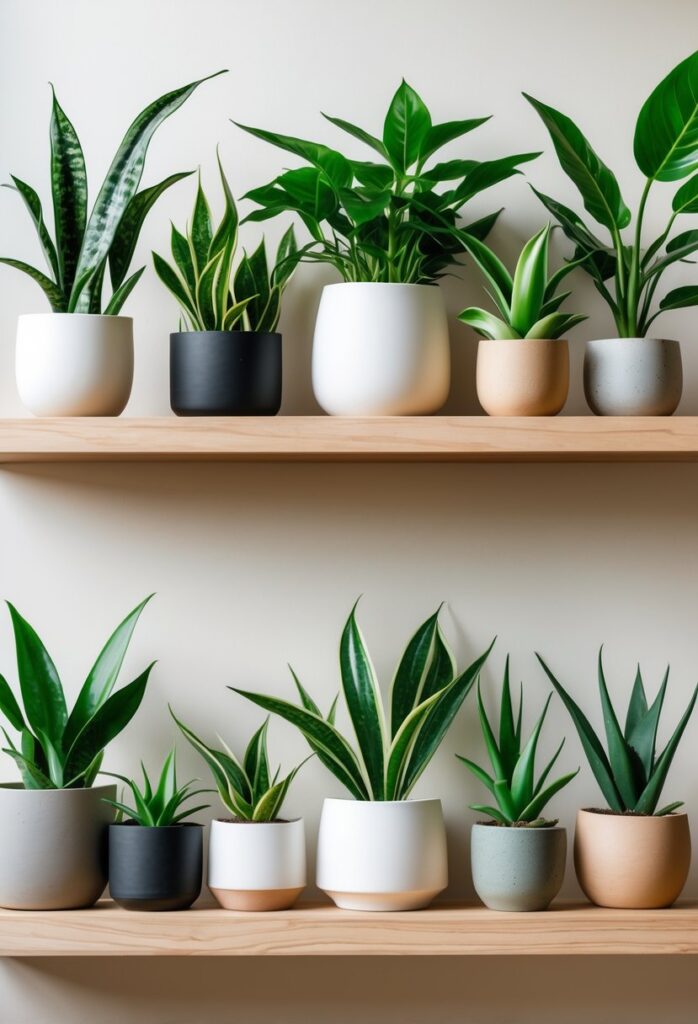
Low-maintenance indoor plants offer a simple way to bring nature inside without complicated care routines. These plants can thrive with minimal attention, making them ideal for busy or beginner plant owners.
1) ZZ Plant
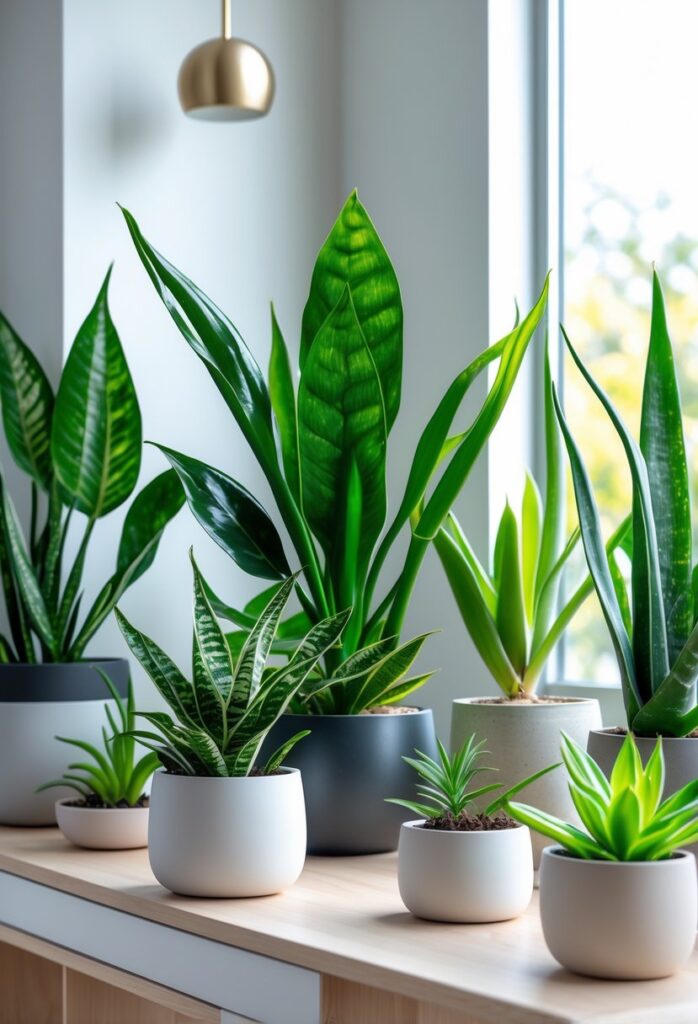
The ZZ Plant, or Zamioculcas zamiifolia, is known for being very low-maintenance. It has glossy, dark green leaves that add a simple, modern look to any room.
This plant can survive in low light and needs watering only when the soil is dry. It is drought-tolerant, making it a good choice for busy people.
The ZZ Plant is also effective at improving indoor air quality. It requires minimal care but still adds a fresh touch to indoor spaces.
2) Snake Plant
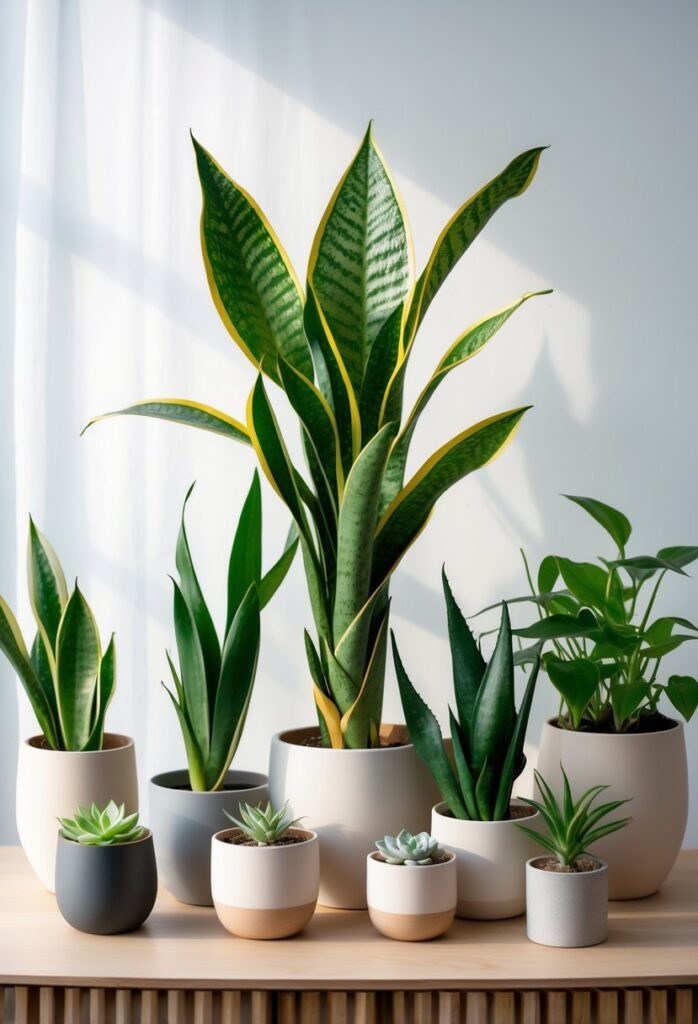
The snake plant is known for its tall, stiff leaves that add a strong visual element to any room. It is very easy to care for and can tolerate low light and infrequent watering.
This plant grows slowly and does not need frequent repotting. It can survive occasional neglect, making it ideal for busy or beginner plant owners.
Snake plants also help improve indoor air quality, making them both practical and decorative in homes and offices.
3) Aloe Vera
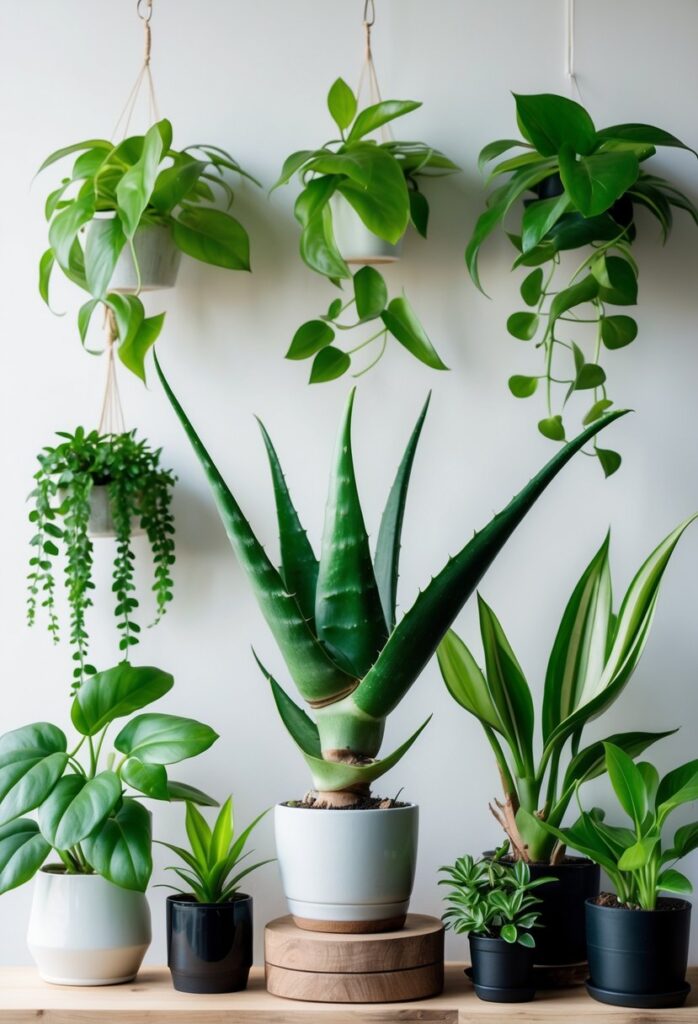
Aloe vera is a low-maintenance plant that thrives indoors with minimal care. It prefers bright, indirect light, making a spot near a window ideal.
The plant only needs watering when the soil is completely dry, usually every two to three weeks. Overwatering can cause root rot.
It grows well at typical room temperatures between 55 and 80°F. Aloe vera also helps improve indoor air quality but is toxic if eaten.
4) Spider Plant
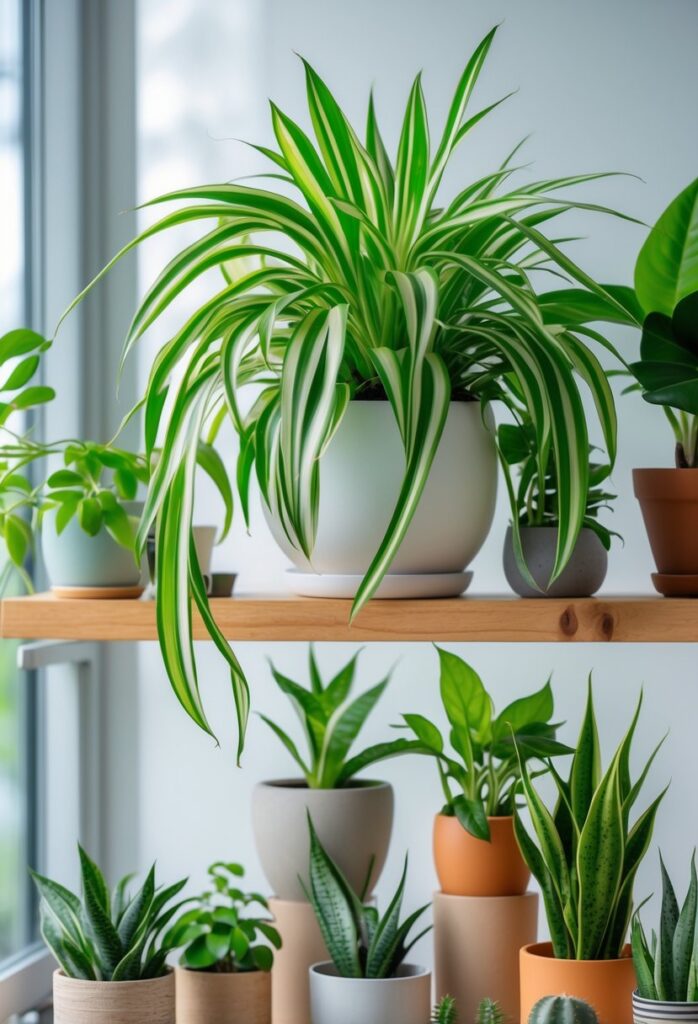
The spider plant is a popular choice for low-maintenance indoor greenery. It adapts well to different light levels but prefers bright, indirect light. Watering can be occasional, as it is drought-resistant and does not require constant attention.
This plant produces small “spiderettes,” or baby plants, that hang from long stems. These can be removed and potted to grow new plants. It also helps clean indoor air by removing certain toxins.
5) Dracaena Marginata

Dracaena marginata, also known as the Madagascar dragon tree, is a popular low-maintenance indoor plant. It has slender leaves with red edges and can grow on tall, thin stems.
This plant tolerates low to bright light and does not need frequent watering, making it ideal for busy spaces. It also helps improve indoor air quality by filtering some toxins.
6) Fiddle Leaf Fig
The fiddle leaf fig is a popular indoor plant known for its large, glossy leaves. It thrives in bright, indirect light but can tolerate lower light for short periods.
It needs well-draining soil and should be watered when the top inch of soil feels dry. Monthly fertilizing during the growing season helps support healthy growth.
Pruning helps control its size and shape. Gloves are recommended during pruning, as the sap can irritate the skin.
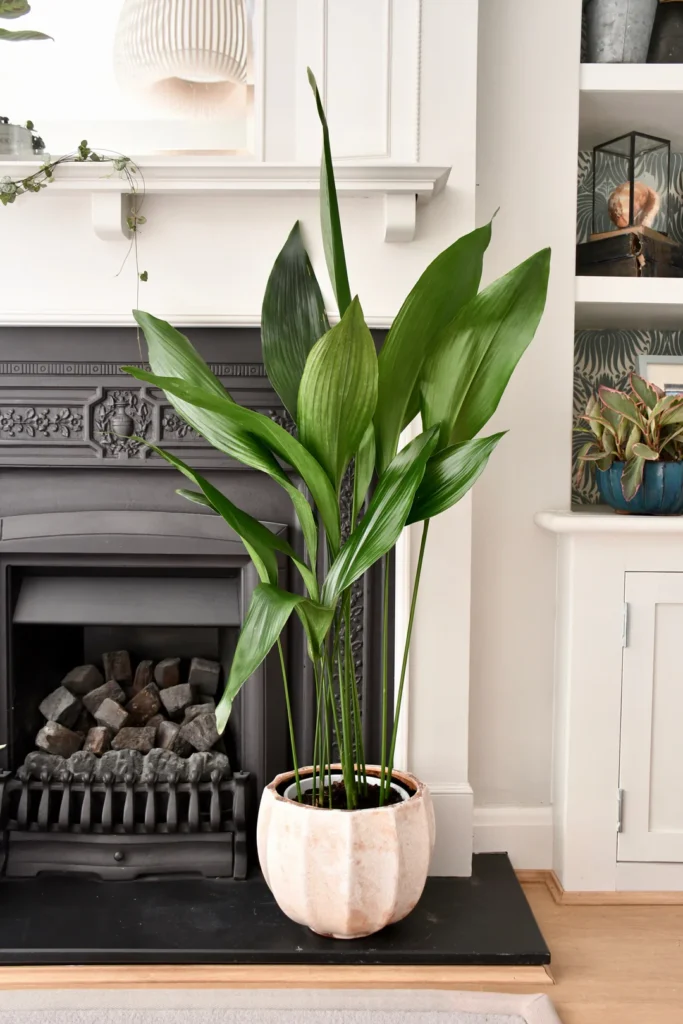
7) Cast Iron Plant
The Cast Iron Plant is known for being tough and easy to care for. It can grow well in low light, making it ideal for spots with little sunlight.
It does not need frequent watering but should not be left too dry for long. This plant tolerates low humidity and neglect better than most houseplants.
Its dark green leaves can add a touch of green to any indoor space. The Cast Iron Plant is a solid choice for beginners or anyone wanting a low-maintenance plant.

Benefits of Low-Maintenance Indoor Plants
Low-maintenance indoor plants offer practical benefits that improve indoor spaces beyond just decoration. They help clean the air and balance humidity, which can affect health and comfort. They also contribute to emotional wellbeing by reducing stress and creating a calming environment.
Air Purification and Humidity Control
Certain low-maintenance plants remove harmful chemicals from the air, such as formaldehyde and benzene. These toxins can come from furniture, cleaning products, and paint. Plants like the spider plant and snake plant are known for filtering these substances, making the air safer to breathe.
They also release moisture into the air, helping maintain indoor humidity levels. This is useful in dry conditions or during winter when heating can lower humidity. Proper humidity reduces issues like dry skin and irritated sinuses.
Many low-maintenance plants can thrive in low light and do not need frequent watering, making it easier to keep air quality balanced with minimal effort.
Stress Reduction and Wellbeing
Indoor plants have been shown to reduce stress and improve mood. Having greenery nearby can create a more relaxing atmosphere, which helps to lower blood pressure and reduce feelings of anxiety.
These plants encourage mindfulness by giving people something to care for without overwhelming demands. Their presence can increase focus and productivity in workspaces or homes.
Even just seeing plants can boost mood. This makes low-maintenance plants a practical choice for those who want these benefits without frequent upkeep.
Key Care Tips for Low-Maintenance Plants
Low-maintenance plants need the right balance of light and water to stay healthy without much effort. Placing them properly and following easy watering routines helps keep them thriving without demanding time or special skills.
Light Requirements and Placement
Most low-maintenance indoor plants do well in bright, indirect light. Direct sunlight can harm their leaves, causing burns or drying. However, some tolerate low light areas, such as corners or rooms with little natural light.
It’s important to know each plant’s light preference before placing it. For example, snake plants and pothos adapt well to low light, while spider plants prefer moderate indirect sunlight.
Avoid placing plants too close to heaters or drafty windows. Moving plants occasionally ensures even growth and helps avoid leaning.
Watering Schedules and Methods
Low-maintenance plants often prefer to dry out between waterings. Overwatering is the most common mistake. Sticking to a schedule of watering once every 1-2 weeks usually works well, but checking soil moisture by touch is better.
Using pots with drainage holes prevents water from pooling at the bottom, reducing root rot risk. Watering deeply but less often encourages stronger root systems.
For busy homeowners, self-watering pots or simple drip systems offer convenience. They provide steady moisture without daily attention. Avoid letting plants sit in standing water.
Common Mistakes to Avoid
Many people overwater their indoor plants. This is one of the most common errors. Too much water can cause roots to rot and harm the plant’s health.
Underwatering is another frequent mistake. Plants need regular moisture, but not the same amount for every species. It’s important to learn each plant’s watering needs.
Choosing the wrong soil type can also cause problems. Some plants require well-draining soil, while others prefer soil that retains moisture. Using the wrong soil affects plant growth.
Placing plants in poor light conditions is a common issue. Some plants need bright, indirect light. Others tolerate low light better. Understanding each plant’s light preference helps keep it healthy.
Ignoring pest problems can quickly damage plants. Checking plants regularly for bugs and treating them early will protect them.
Finally, failing to repot when necessary can stifle growth. Roots may become crowded, so repotting every year or two supports healthy development.
| Common Mistakes | Effects | How to Avoid |
|---|---|---|
| Overwatering | Root rot, plant stress | Check soil moisture first |
| Underwatering | Dry, wilted leaves | Water on schedule |
| Wrong soil | Poor growth | Use recommended soil types |
| Poor lighting | Yellowing, slow growth | Match plant to light levels |
| Ignoring pests | Leaf damage, spread | Inspect and treat early |
| Skipping repotting | Root crowding, stunting | Repot as plant grows |
Frequently Asked Questions
Low-maintenance indoor plants often succeed in low light, help purify the air, or are safe around pets. Knowing which plants fit these needs can make it easier to choose.
What are some ideal indoor plants that require minimal light?
The ZZ Plant and Snake Plant are good choices for low light areas. Both can survive with little sunlight and need watering only occasionally.
Which indoor plants are best for purifying the air with low maintenance?
Spider Plant and Dracaena Marginata are known for cleaning indoor air. They need simple care, such as moderate watering and indirect light.
Which low-maintenance houseplants are safe for pets?
Aloe Vera is considered safer around pets compared to other common plants. While it requires little care, owners should still monitor pets to avoid any issues.
